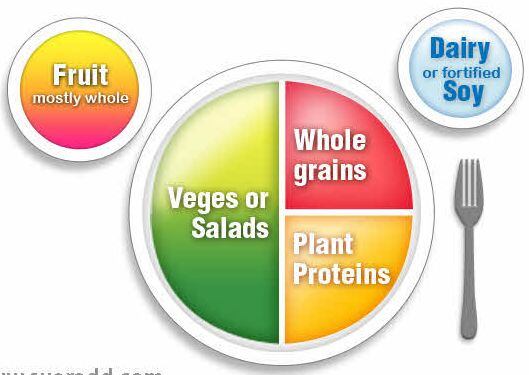In a comment to USDA’s food and nutrition service – which is currently exploring whether rules need to be amended - the GFI notes that the Dietary Guidelines “encourage the incorporation of plant-based foods” and recommend consuming a variety of protein foods, including legumes, nuts, seeds, and soy products as well as animal products.
Foods credited under government programs, says the GFI, “should be as broad as possible to allow schools and other institutions to offer diverse foods and meet the dietary and cultural preferences of the people they serve, so long as nutrition standards are met.”
While some dairy groups have queried the nutritional benefits of plant-based beverages, USDA already allows fortified soymilk to be included (albeit only with a note from parents/guardians or a doctor – something the GFI also wants to change), adds the GFI.
Pea-based milks from brands such as Ripple and Bolthouse Farms are nutritionally equivalent to dairy milk
Pea milks from brands such as Ripple and Bolthouse Farms have equivalent or superior levels of protein, calcium, vitamin A and vitamin D to 2% dairy milk, and less sugar than flavored dairy milks currently allowed in the program, it adds.
Tempeh – a fermented soy dish commonly used as a meat analog – is an excellent source of protein that delivers calcium, B vitamins, potassium, magnesium and phosphorus, claims the GFI; while seitan – a meat substitute made from wheat gluten popular in Asian cuisine – delivers protein,** iron and fiber, without saturated fat, trans fat or cholesterol, it adds.
Relying on outdated standards of identity to determine which foods are creditable, meanwhile, “limits the ability of schools and other care facilities to offer a broad array of healthy and culturally diverse foods to the populations they serve and does not meaningfully advance the goals of the Child Nutrition Programs.”

In order to claim federal reimbursement, child nutrition program operators (eg. schools etc) must serve meals and snacks that meet the minimum meal pattern requirements of the respective program. Crediting is the process designed by USDA's food and nutrition service (FNS) to specify how individual food items contribute to the child nutrition programs' meal patterns. Several factors impact how food products can credit toward reimbursable meals, such as volume, weight, and overall nutrient profile.
In a recent request for comments (deadline April 23) as to how it "can best address today's evolving food and nutrition environment," USDA asked stakeholders to comment on questions including:
- Should fortification play a role in determining if and how a food is credited?
- If a food does not have a federal standard of identity or industry standards for production, how could it be credited in the child nutrition programs?
- Should FNS allow shelf-stable, dried or semi-dried meat, poultry, and seafood snacks, surimi, tempeh, vegetable chips to contribute to the child nutrition program meal patterns?
- Is there an ingredient or processing method that could qualify or disqualify a yogurt from crediting in the child nutrition programs (e.g., a particular thickening agent could disqualify a high protein yogurt)?
IDFA: A food or beverage should be judged on the nutritional value it provides, not whether it aligns with a standard of identity
While the dairy industry has defended standards of identity in its attempts to stop plant-based brands using dairy-derived terms on product labels, the International Dairy Foods Association, however, argues that in the context of school food standards, SOIs are less helpful.
In comments to the agency, it writes:
“A food or beverage should be judged on the nutritional value it provides, rather than whether it aligns with a standard of identity.”
For example, says IDFA, if a nutrient is altered in order to meet a claim such as ‘reduced sugar,’ “the product will no longer meet the standard of identity,” which means that reduced sugar milk sweetened with non-nutritive sweeteners is not provided for in the child nutrition programs:
“Reduced sugar milk and other milks that use a nutrient content claim in their name should be allowed in child nutrition programs, as long as they meet the required fat levels.”
NMPF: Nutritional equivalence rules are flawed
In its comments to the agency, the National Milk Producers Federation, meanwhile, urged the agency to update “flawed” rules that allow dairy milk substitutes (presumably soymilk – which is the only one currently permitted) to be part of a reimbursable meal.
According to the NMPF: “The current basis of comparison for equivalence is flawed and results in the substitute beverages containing lower levels of important nutrients than does school milk. This is because FNS uses whole milk as the basis of comparison in determining required nutrient fortification levels for the non-milk beverages. [But] whole milk is not allowed in schools. Only low-fat (1%) and fat-free milk are allowed. Therefore, one or both of these milk varieties is the appropriate comparator if FNS wishes to follow the law and guarantee nutritional equivalence.
A cup of whole milk has 276mg calcium, which is the standard for substitute beverages, whereas a cup of 1% milk contains 305mg calcium, explains the NMPF. “Students who consume substitute beverages in school under the current regulations are not, in fact, getting the same amounts of nutrients as if they drank milk, in contravention of the requirements of law.”
*Child nutrition programs include the National School Lunch Program, School Breakfast Program, Child and Adult Care Feeding Program, and the Summer Food Service Program.
** Although wheat gluten has a fairly low PDCAAS score, acknowledges the GFI, “We do not believe this should prevent seitan from being creditable as a meat alternate. Studies have shown that proteins do not need to be complemented in every meal to reach the desired level of essential amino acids as long as diets are varied. The Academy of Nutrition and Dietetics states: ‘The terms complete and incomplete are misleading in relation to plant protein. Protein from a variety of plant foods, eaten during the course of a day, supplies enough of all indispensable (essential) amino acids when caloric requirements are met."

According to a 2014 Harris Interactive poll, 4% of Americans aged 8-18 are vegetarian or vegan, whether for health (eg. lactose intolerance, milk protein allergy), sustainability, animal welfare, or religious reasons (Seventh Day Adventists, some Hindus, Buddhists etc), says the Good Food Institute.
“Allowing schools to serve a wider variety of plant-based protein foods enables schools to better meet the nutritional needs of these religious groups and vegetarians in general.”

“We are writing to encourage USDA to credit tempeh or soy tempeh in Child Nutrition Programs. Doing so supports the growing trend toward healthier and more sustainable alternatives to conventional meat at the ‘center of the plate,’ as well as offers culturally diverse options for a wide array of dietary preferences.
“According research by Lux Market, plant-based protein (in general) could represent one third of overall protein by 2054. Tempeh is an important subset of this trend and it is also a traditional staple food used by many cultures for centuries. In addition, we also support the Soyfoods Association comment that USDA should eliminate the onerous and unnecessary requirement that parents provide a note to allow their children to substitute soymilk for dairy milk in Child Nutrition Programs.”
Michele Simon, executive director, Plant Based Foods Association (in public comments to USDA on the crediting system for the child nutrition programs)
